Cambodia Flag Meaning
Three horizontal stripes of blue, red (double width), and blue with a white depiction of Angkor Wat temple in the center, representing the nation, the king, and the sacred temple that symbolizes Cambodia's glorious past and cultural heritage.
- Continent
- Asia
- Adopted
- 1993
- Ratio
- 2:3
- Colors
- blue, red, white
- Designer
- Unknown (traditional design)
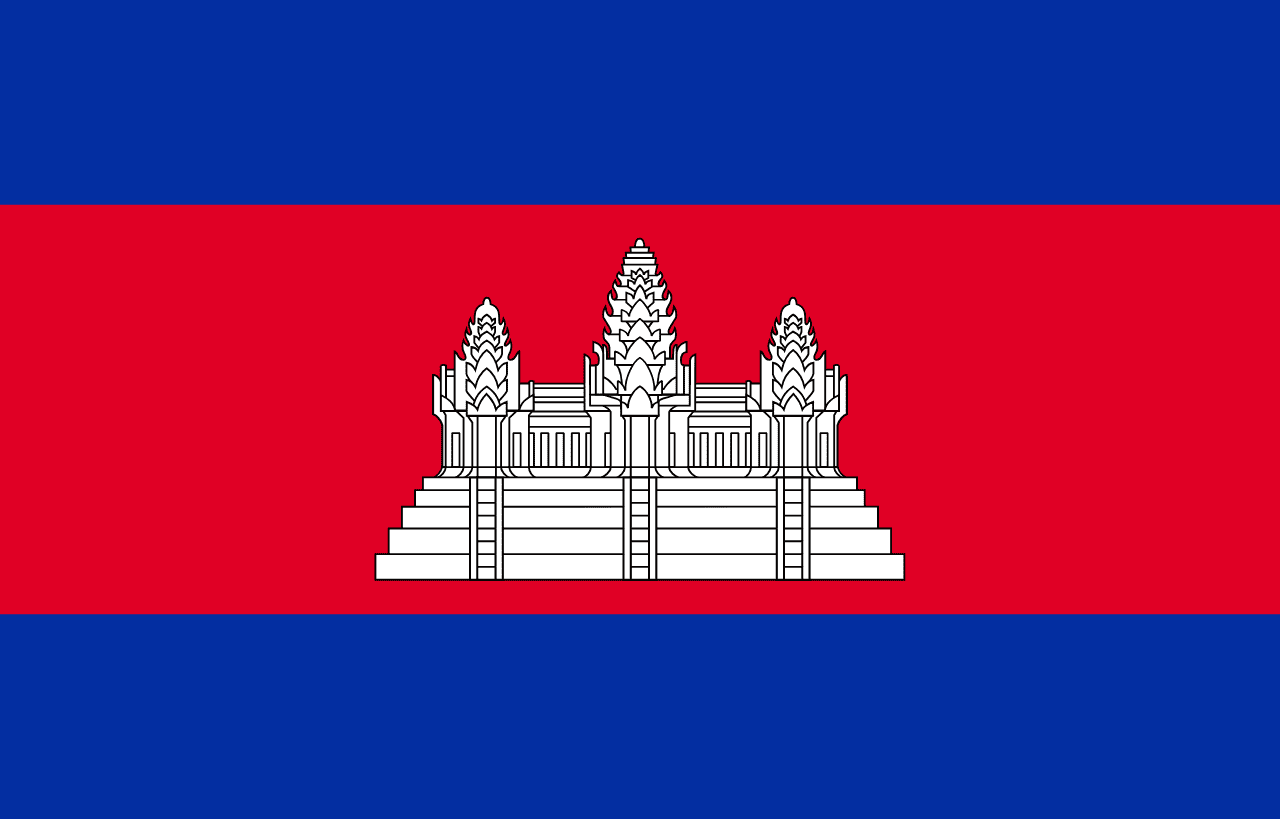
Symbolism
Blue Stripes: Represent the monarchy and the king who serves as protector of the Cambodian people, symbolizing royal authority, justice, and the constitutional monarchy that has been restored in modern Cambodia.
Red Central Stripe: Represents the nation and the Cambodian people, symbolizing the courage and bravery of the Khmer people throughout their long history and their determination to preserve independence and cultural identity.
White Angkor Wat: Represents the iconic temple complex of Angkor Wat, symbolizing Cambodia's Buddhist religion, the architectural and cultural achievements of the ancient Khmer Empire, and the spiritual foundation of Cambodian civilization.
History
- 9th-15th Century: The Khmer Empire reached its zenith under kings like Jayavarman VII, building the magnificent Angkor temple complex and controlling much of Southeast Asia from their capital at Angkor.
- 1863-1953: French colonial rule established the French Protectorate of Cambodia, introducing Western administration while preserving the monarchy and some traditional institutions under King Norodom and his successors.
- November 9, 1953: Cambodia gained independence from France under King Norodom Sihanouk, adopting various flag designs that included Angkor Wat as a central symbol of Khmer identity and heritage.
- 1970-1975: The Khmer Republic was established following a coup against Prince Sihanouk, using a blue flag with red canton containing three white stars during this period of civil war and American bombing.
- April 17, 1975-1979: The Khmer Rouge under Pol Pot took power, implementing radical agrarian communism that resulted in the deaths of 1.5-2 million Cambodians through execution, forced labor, and starvation.
- 1979-1989: The People's Republic of Kampuchea was established under Vietnamese occupation, using a flag with five yellow towers representing Angkor Wat on a red field with yellow border.
- 1989-1993: The State of Cambodia replaced the PRK as Vietnam withdrew, while UN peacekeepers oversaw the transition to democracy and the return of Prince Sihanouk from exile.
- September 24, 1993: The Kingdom of Cambodia was restored with a new constitution, readopting the traditional flag with Angkor Wat to represent the constitutional monarchy and democratic government.
- 1993-Present: The flag has represented Cambodia through its democratic transition, though political stability has been challenged by authoritarianism under Prime Minister Hun Sen's long rule.
Trivia
- Cambodia is the only country in the world whose flag features a building, specifically the iconic Angkor Wat temple complex.
- Angkor Wat is the largest religious monument in the world and was originally built as a Hindu temple before becoming Buddhist, representing Cambodia's religious evolution.
- The flag represents a country where the Khmer Rouge genocide killed approximately 25% of the population between 1975-1979, one of the worst atrocities of the 20th century.
- Cambodia's Mekong River is crucial for the country's agriculture and fishing, with the annual flood cycle depositing fertile sediment across the central plains.
- The flag flies over a country that is heavily dependent on agriculture, with rice being the staple crop and primary export, supporting most of the rural population.
- Cambodian cuisine features unique dishes like fish amok and beef loc lac, blending influences from Thailand, Vietnam, China, and France.
- The country has a young population, with about 60% under age 25, reflecting high birth rates and the demographic impact of the Khmer Rouge period.
- Cambodia is one of the world's poorest countries but has experienced rapid economic growth driven by garment manufacturing, tourism, and construction.
- The flag represents a country where Theravada Buddhism is practiced by over 95% of the population, with thousands of pagodas and monasteries throughout the nation.
- Phnom Penh, the capital, sits at the confluence of the Mekong and Tonlé Sap rivers, making it a crucial transportation and commercial hub.
- Cambodia is home to the Tonlé Sap Lake, which changes dramatically in size between dry and wet seasons, supporting millions of people through fishing and agriculture.
- The country has significant problems with unexploded ordnance from decades of conflict, making farming and development dangerous in many rural areas.
- Traditional Cambodian arts including classical dance (Apsara), silk weaving, and silver working nearly disappeared under the Khmer Rouge but have been revived.
- Cambodia's flag represents a constitutional monarchy where King Norodom Sihamoni serves as head of state while the prime minister holds executive power.
- The country has made significant progress in reducing poverty and improving education and healthcare, though corruption and weak institutions remain major challenges.
Related Countries
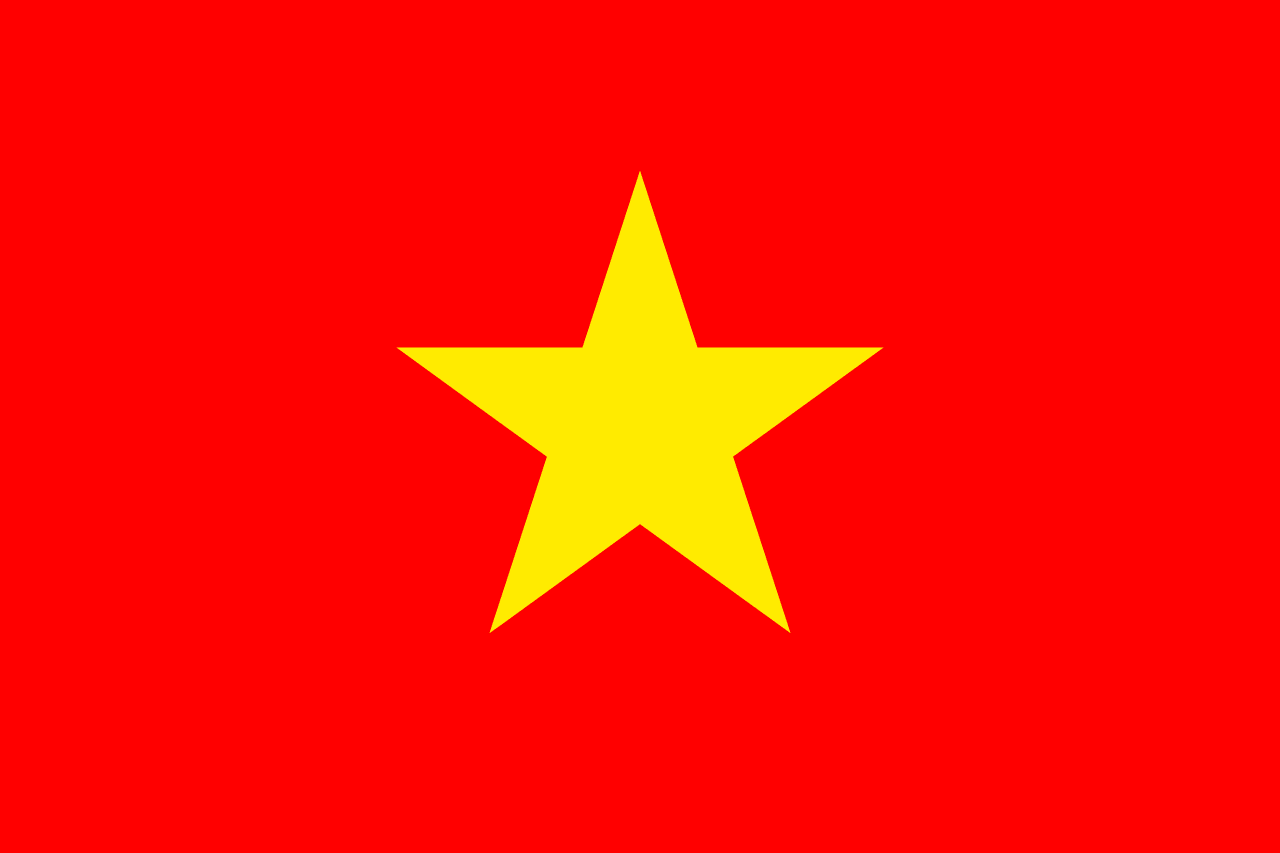
Vietnam
Asia
A red field with a large yellow five-pointed star in the center, representing the blood shed for independence and the unity of workers, peasants, intellectuals, youth, and soldiers under Communist Party leadership in the struggle for national liberation and socialist construction.

Thailand
Asia
Five horizontal stripes with red at top and bottom, white in the second and fourth positions, and blue in the center, representing the nation and the people, the purity of Buddhism, and the monarchy, designed by King Rama VI during World War I to show solidarity with the Allies.
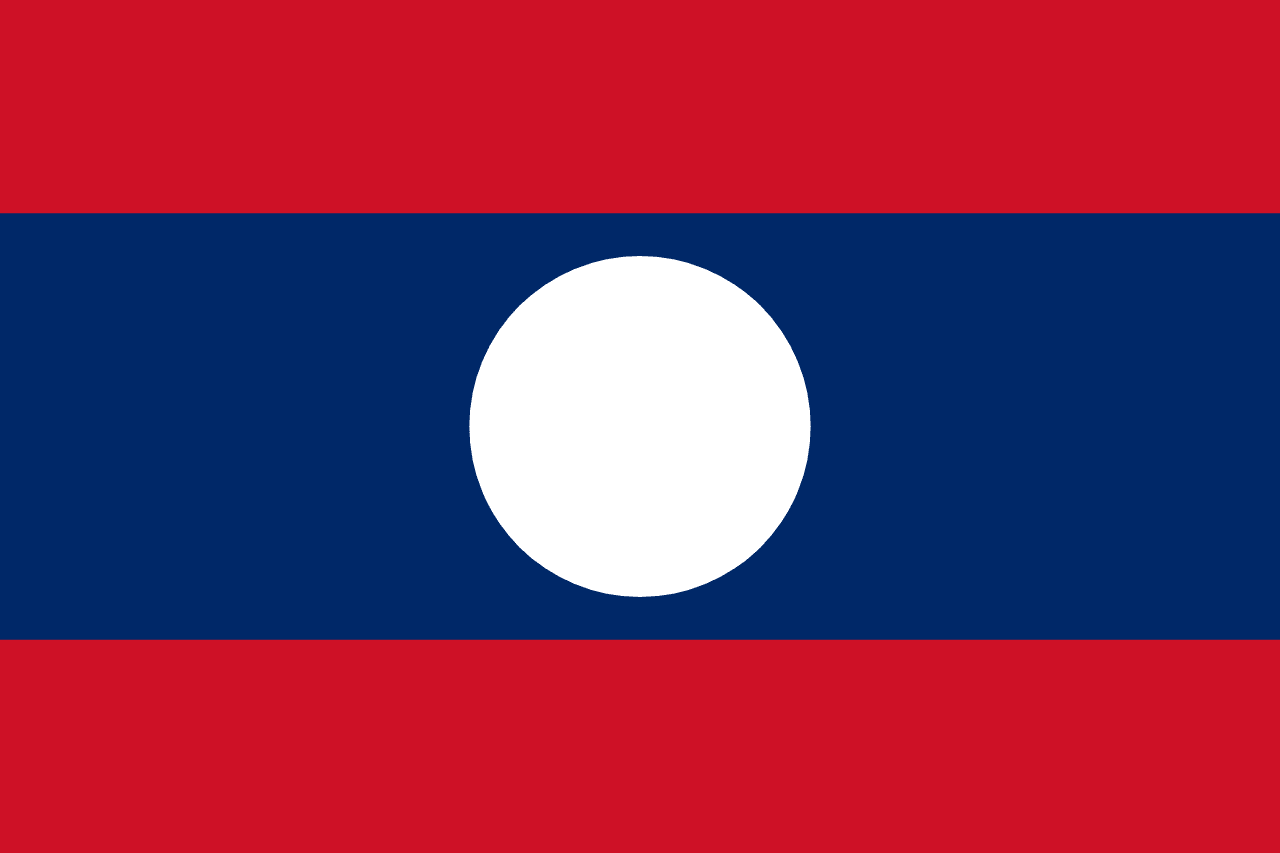
Laos
Asia
Three horizontal stripes of red, blue, and red with a white circle centered on the blue stripe, representing the blood of independence, the Mekong River, and the full moon reflecting unity of the Lao people.

Malaysia
Asia
Fourteen alternating red and white stripes with a blue canton containing a yellow crescent and 14-pointed star, representing the federation of Malaysian states and territories united under Islam and royal authority.
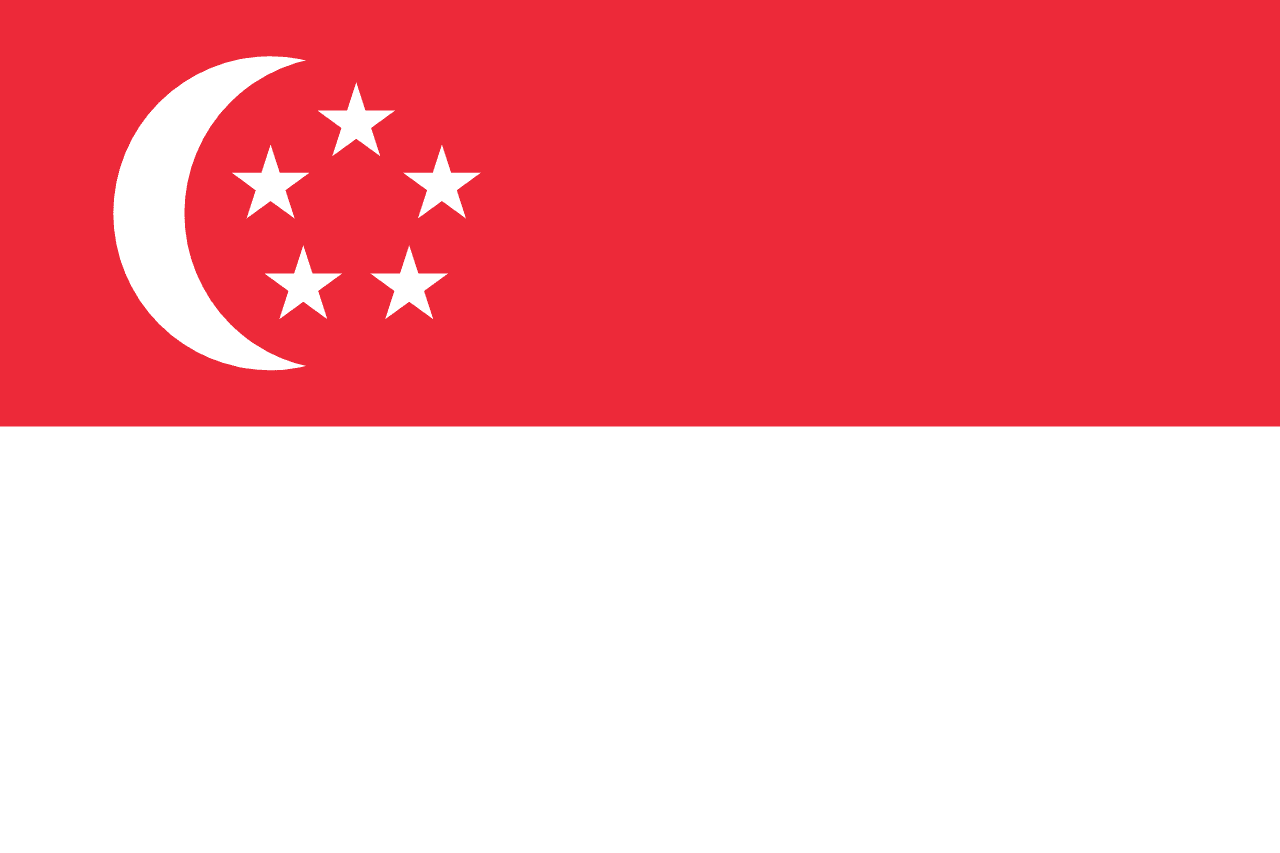
Singapore
Asia
A bicolor flag with a red upper half and white lower half. In the upper hoist is a white crescent moon beside five white five-pointed stars arranged in a circle. The flag symbolizes Singapore’s ideals of unity, progress, and multicultural harmony.
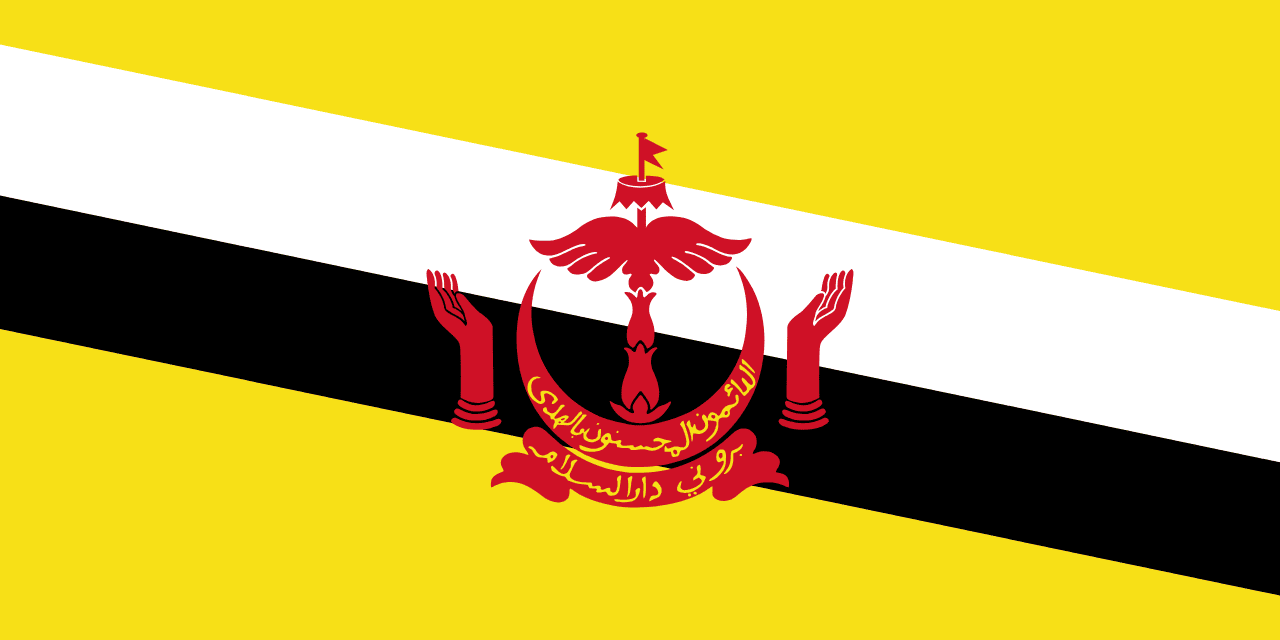
Brunei
Asia
A yellow field with two diagonal stripes of white and black, featuring the national coat of arms in red in the center, representing the Sultan's sovereignty, the state's prosperity, and the nation's commitment to peace and Islamic values.